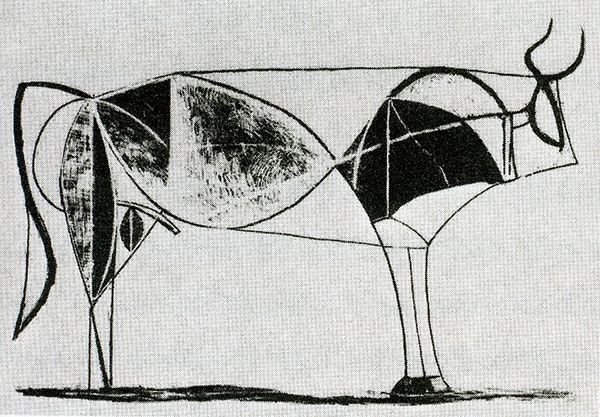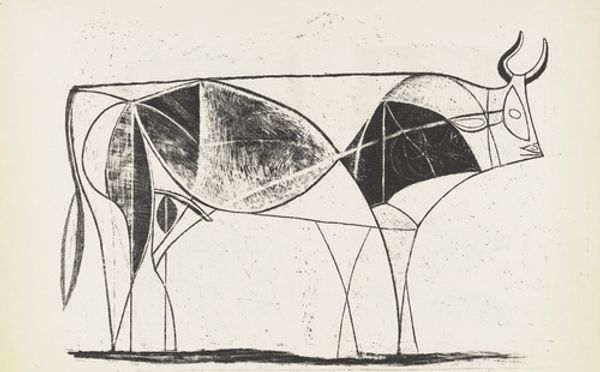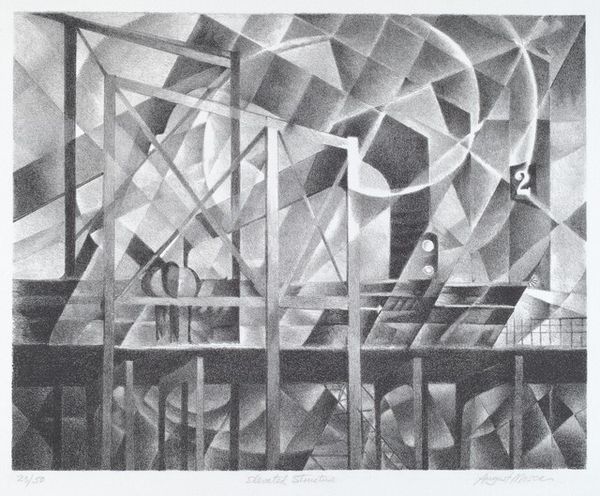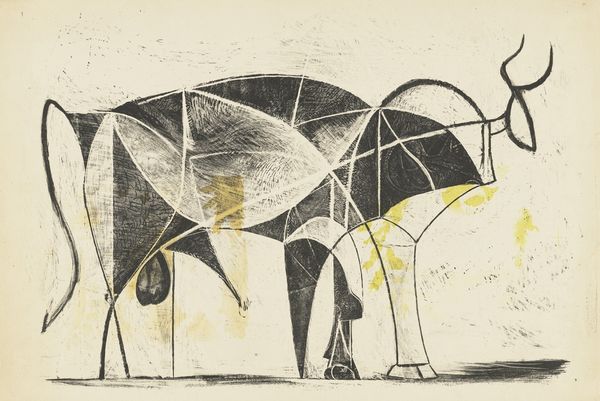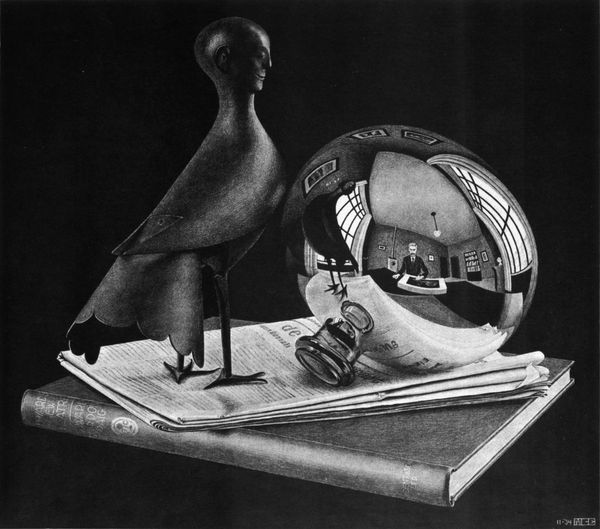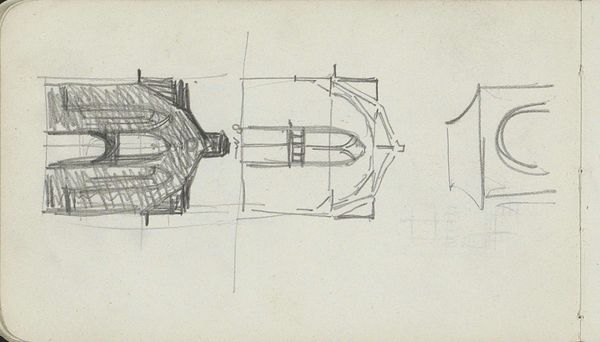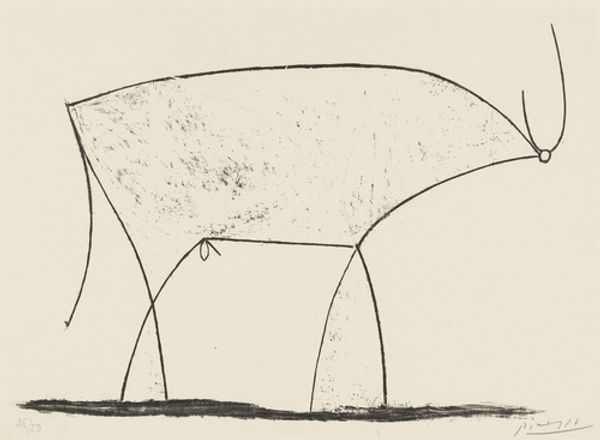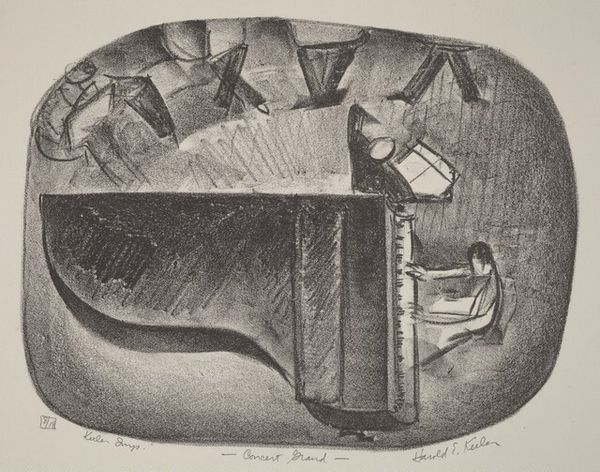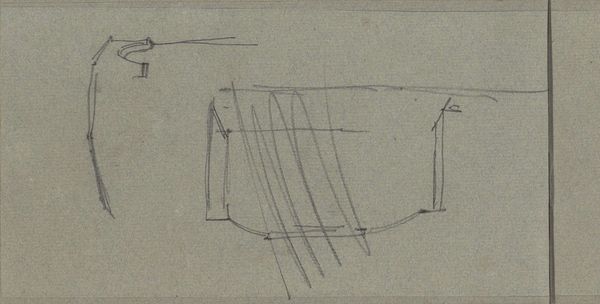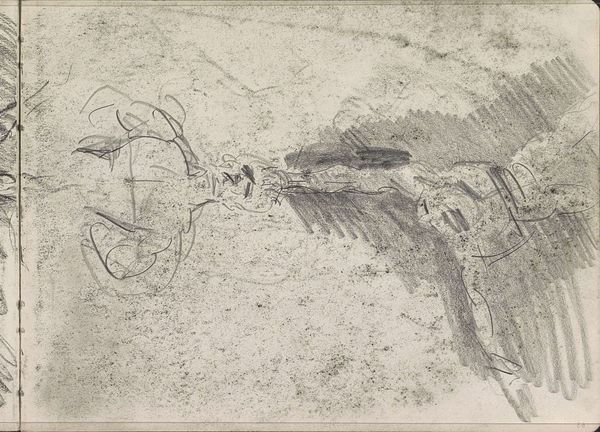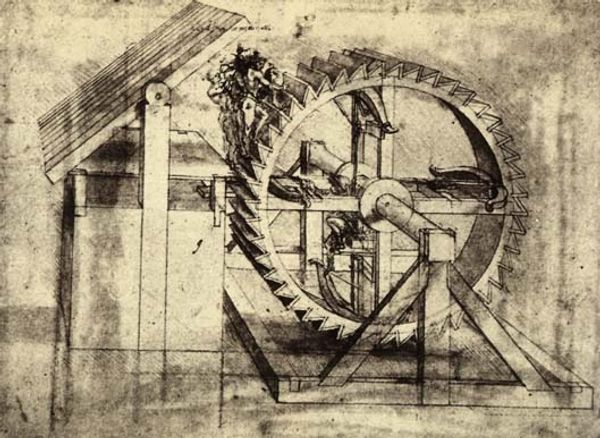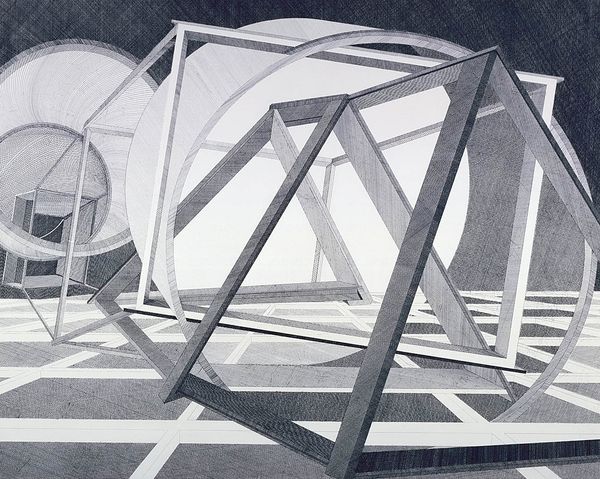
print, photography, engraving
#
abstract-expressionism
#
animal
# print
#
form
#
photography
#
geometric
#
abstraction
#
engraving
#
monochrome
Copyright: Pablo Picasso,Fair Use
Editor: So, this is Picasso's "Bull (plate VI)" from 1945, a print, an engraving. I'm really struck by how it moves between being a recognizable bull and pure geometric shapes. What kind of meaning can we unpack from that visual tension? Curator: Indeed. The bull, throughout history, has carried immense weight – think of its presence in mythology, religious practices, even economic systems. What do you make of the artist's choice to deconstruct this iconic form? Is it diminishing the bull's symbolic power or perhaps amplifying certain aspects of it? Editor: I see how the abstraction could break down the traditional idea of the bull as a symbol of virility and strength, maybe? But the geometric structure feels so strong and defined, it seems almost to contain that raw energy. Is there a link with collective memory through this recognizable form? Curator: Precisely. The recognizable form taps into our collective understanding, and the abstraction pushes us to reconsider what the bull represents beyond its brute strength. Consider the time period - 1945, the end of World War II. Could this deconstruction also symbolize the breakdown of old orders, a fracturing of established ideals and powers, where cultural memory persists despite immediate events? Editor: That’s fascinating. So the bull, beyond just being a bull, acts as a visual representation of cultural and historical shifts? I suppose each line and shape gains added significance when we see them within this broader historical and symbolic context. Curator: Exactly. And the progression Picasso takes with the Bull series shows him systematically stripping away, simplifying – perhaps in search of the core essence of the symbol, while reminding us of continuous transformation. This reductive act allows the bull to function as a cultural anchor even as the world transforms drastically around it. What a process! Editor: This has given me so much to think about, especially regarding how a single image can hold so much historical and cultural information. I will never see Picasso's bulls in the same light! Curator: It's remarkable how such a seemingly simple image can become a conduit to understanding complex ideas of continuity. Art really reflects humanity's evolution, wouldn't you agree?
Comments
No comments
Be the first to comment and join the conversation on the ultimate creative platform.
